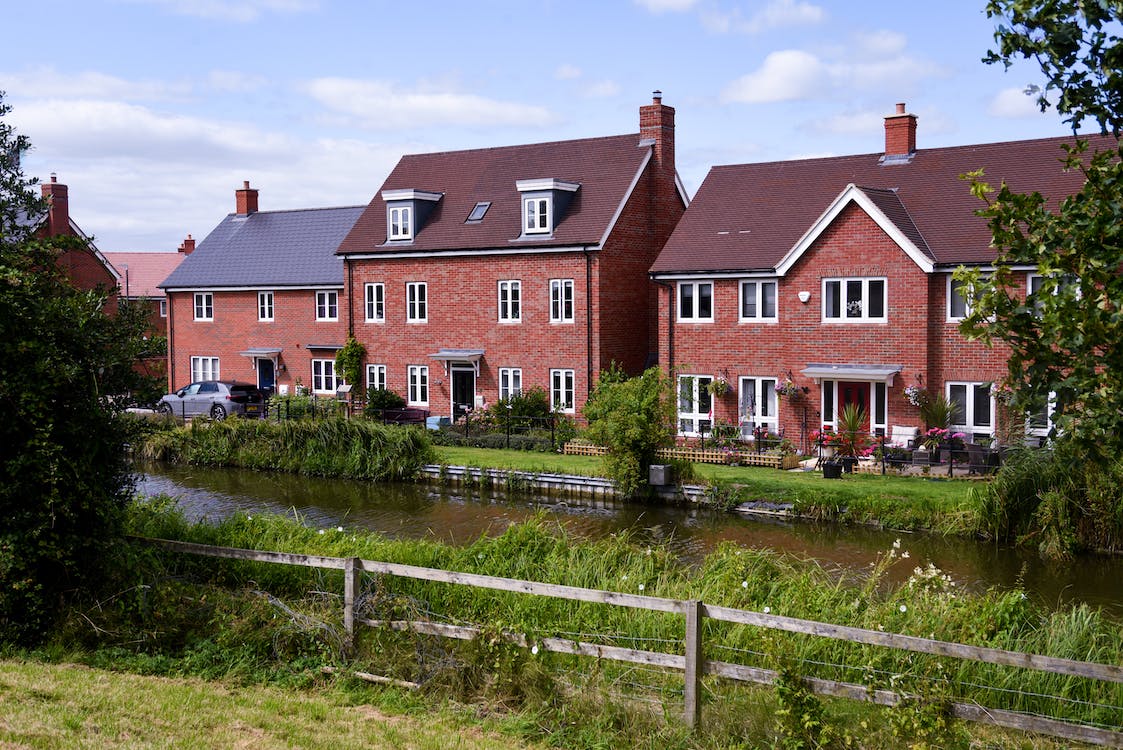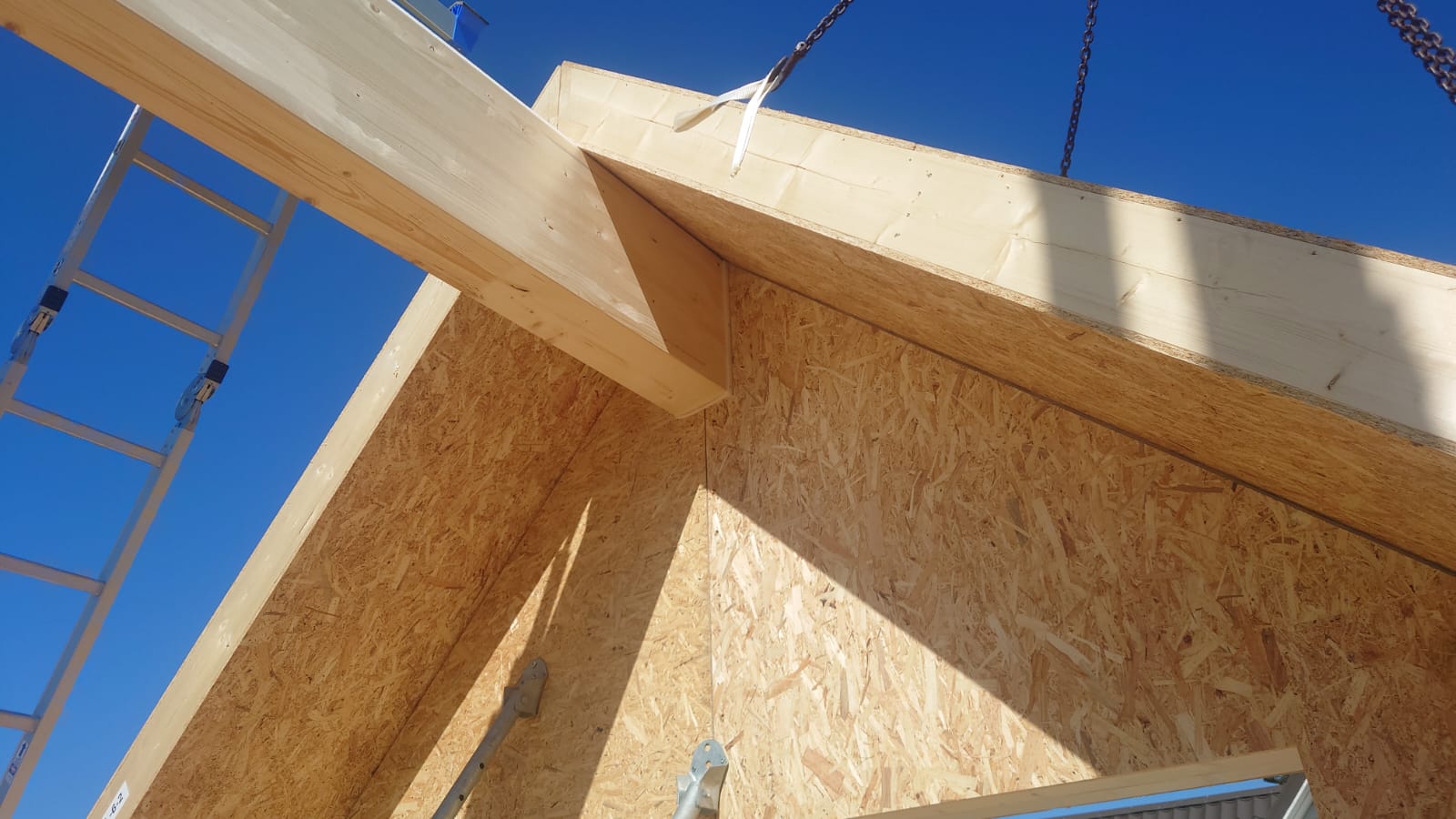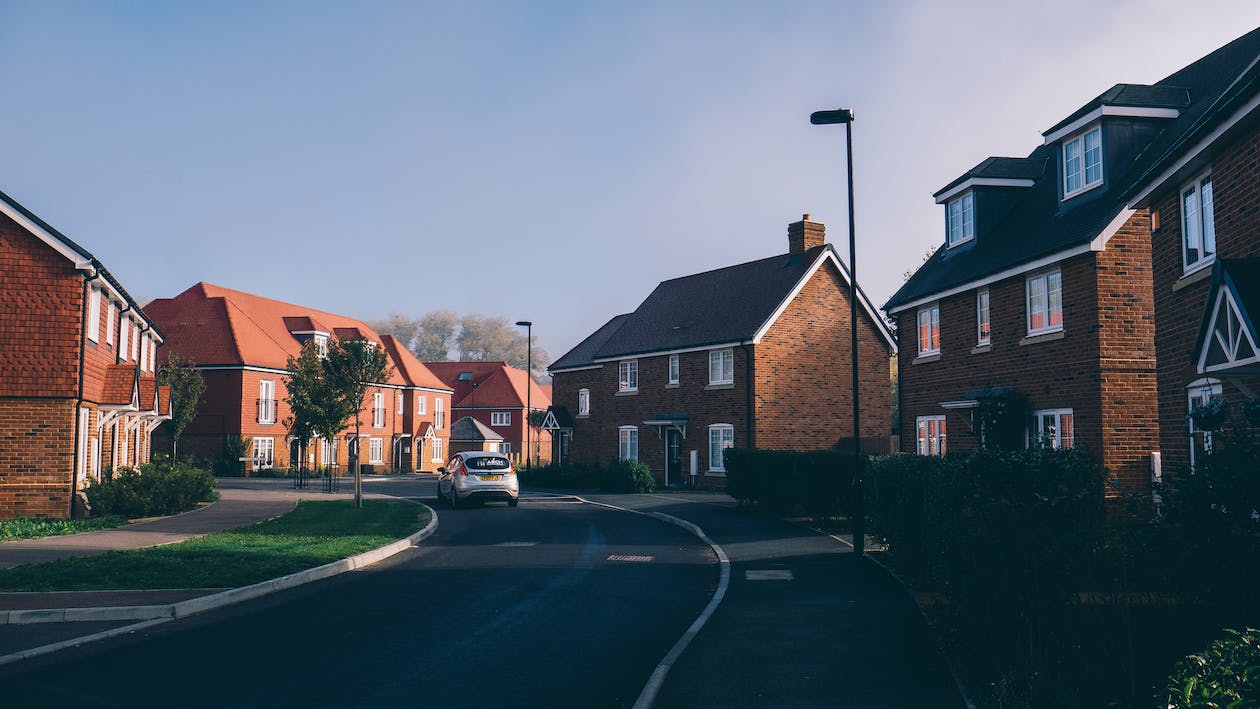
Are timber-framed houses the answer to our bricklayer shortage?
With bricklayers even scarcer than housing, wooden-framed properties may be the solution to a building logjam. We look at the costs and environmental impact
The Times
It’s no secret that Britain desperately needs more homes. But there’s a fair chance that, by the time politicians actually agree on where to build them and how to reform the labyrinthine planning system, there won’t be enough bricklayers left to build them.
This country is in the middle of a builder recruitment crisis: the average age of a bricklayer is about 50, according to the Office for National Statistics.
As well as a lack of young builders entering the trade, the shortage has been aggravated by an exodus of eastern European workers post-Brexit and post-pandemic. There are more than 45,000 builder vacancies in the UK, according to the industry body Build UK — double the pre-Covid level — and, at this rate, it’s projected that the building trade will need 266,000 more builders by 2026. Such is the shortage of talent, that bricklayers can name their price for jobs; some are reportedly earning more than £125,000 per year.
One solution promoted loudly in recent years is modular homes (just don’t call them flatpack). They’re made of panels and built in factories before being lifted by crane onto sites. But, far from revolutionising housebuilding, modular companies have been failing fast, including the collapse of companies such as L&G and Ilke Homes, which were launched with much fanfare at the end of the last decade. Construction companies, it seems, aren’t prepared to take a risk on modular properties.
“For modular to work, it needs volume,” says Simon Cox, a land agent and building standards expert. “To turn a factory on costs hundreds of millions of pounds, and to make it work you need a full order book — and planning delays mean that you don’t get that. When Jaguar Land Rover had to turn their machines off for the day [due to a shortage of computer chips], it was front page news. Imagine trying to build houses, a much more expensive commodity on a much larger scale, but your factory is only on every other day and you have to stop halfway through because the local planning committee has changed its mind.”
There is another big problem with modular homes, Cox adds. It’s an issue that has been the elephant in the room for many big names who launched into the industry in recent years: the fact that many houses and flats are perceived by planners as ugly or identikit. “To be blunt, you’ve got four styles of housing and that’s it. It’s very difficult to produce something that’s individual and subjectively beautiful.”
Last year, Make UK Modular, the voice of the UK’s factory-built homes industry, said only 3,300 modular homes were built due to a chronic shortage of orders — not exactly close to the government’s (now moribund) target of building 300,000 homes a year.
So what is the solution to this logjam? A growing number of the biggest developers believe it is to utilise one of the oldest building materials in the world: wood.
The safety of the modern timber-frame-building process, its speed and, crucially, the fact that construction companies won’t need to rely on bricklayers to build them, all make timber frames an increasingly attractive option.
Indeed, wood is now the favoured choice for new-build homes in Scotland, with about 90 per cent of new-builds being made from timber frames. In England the figure is only about 10 per cent (it’s 22 per cent in Wales and 30 per cent in Northern Ireland), according to data from the National House Building Council.
However, big housebuilders like Persimmon, Taylor Wimpey and Barrett are all rapidly ramping up their timber capabilities.
What is timber framing — and why do it?
Timber-frame homes are constructed from wooden panels that have been cut and shaped at a factory to form a house’s floors, walls and roof. These panels are then transported on a flatbed lorry to a building site, before being lifted into position by crane.
Homeowners may be unable to tell from the outside if their home is made with a timber frame, though, because many housebuilders still construct an outer leaf of bricks around the wood.
Developers like timber-framed homes because building them is fast — it typically takes 18 weeks to complete a timber-frame house, compared with 28 weeks for traditional masonry construction — plus timber-frame homes can be used to create multiple individual housing styles, satisfying both builders’ targets and the housing secretary Michael Gove’s desire for more beautiful homes.
“The obvious advantage is speed: in the development industry, time is money,” says Cox, the managing director of Walter Cooper, an agency that acquires land for clients from the private and public sector. “The ‘cost’ of money has gone up significantly because of mortgage rates and interest rates. So the quicker you can do it, the less time you are borrowing money.”
Mark Farmer, a construction technology expert and the chief executive of Cast, a building consultancy, says adopting timber construction enables builders to move out of their comfort zone — but not too far out. “It’s a method of construction which is probably more in the volume housebuilders’ comfort zone as opposed to mainstream modular, which has been seen by some as a step too far too quickly,” he says.
As well as beating the bricklayer shortage, a key reason big developers are becoming more keen on timber frames is because it ticks environmental boxes. The government has told developers that from 2025 they must abide by the Future Homes Standard, which will require CO₂ emissions produced by new homes to be 75-80 per cent lower than those built to present standards. Trees store carbon until they decompose, so help with these targets. There is also less waste than traditional methods of construction, as timber panels can be cut precisely in a factory, while what is left over can be recycled.
What are big developers doing?
The timber homes market is growing fast. Persimmon, Britain’s second-biggest housebuilder, announced in the summer that Space4, a subsidiary, would double its capacity after plans for a 493,000 sq ft facility in Loughborough, Leicestershire, were approved by Charnwood borough council. The factory, which is expected to be fully operational by the end of 2025, will produce timber-frame units for up to 7,000 homes a year.
Unlike modular factories, Space4 does not produce whole homes but manufactures only timber frames, insulated wall panels and roof cassettes. It operates out of a factory in Castle Bromwich in Birmingham, and most of the shells it produces are sold to companies in the Persimmon group. A review by the FTSE 100 housebuilder found that Space4’s construction of timber frames was about seven weeks faster than using traditional methods.
“It does reduce the reliance on bricklayers — largely because it replaces the need for the internal blockwork; bricklayers are still required for facing bricks,” Persimmon says.
Barratt Developments, the UK’s biggest housebuilder, is to open a 186,000 sq ft timber-frame factory in Derby as part of its plans to build 8,000 timber homes a year. Meanwhile, Taylor Wimpey, the UK’s third-biggest housebuilder, has just opened a 240,000 sq ft timber-frame factory in Peterborough.
Most of the timber used by housebuilders in the UK is imported from Sweden and Finland, partly because the trees grown there tend to be straighter and stronger than British trees.
A question of cost
This is the most contentious issue. Before the pandemic, timber was cheaper than mainstream construction. A report commissioned by Rider Levett Bucknall, a consultancy, found that in 2018 the construction cost per square metre of an average timber-framed home was slightly cheaper than one made of masonry — although costs fluctuate wildly depending on the quantity of timber used in each project. But in recent years this mathematical model has been thrown up in the air because the cost of materials has risen stratospherically due in part to the Russian invasion of Ukraine.
According to an analysis by Timber Now, an industry website, the cost of production for construction timber globally has risen by more than 50 per cent since pre-pandemic levels (driven upwards by lockdown-related supply chain issues) and 10 per cent more so far this year. Notably, Russia is one of the world’s largest timber exporters, with more than a fifth of the world’s forested areas. Since the invasion in February 2022, however, the EU has sanctioned all Russian timber products, although some illegal trade continues.
All this makes getting hold of timber a costly exercise, says Stefan Pitman, the founder of SPASE, an architectural firm specialising in timber. “Pre-Covid, the cost of timber per cubic metre was £160, at its peak, post-Covid, it went up to £640,” Pitman says. “Today it is down to roughly £230.”
Most timber-frame developers and experts who spoke to The Times agreed that convenience and speed were the main advantages, not cost. The builder John Basinger, 70, recently finished a three-bedroom detached timber-framed home near Dorchester, Dorset, which was designed by SPASE, before selling it for £435,000. As part of the same development, he built two other properties that were not timber-framed.
“We had spreadsheets coming out of our ears on this project, and we were particularly cautious as it’s our first timber-framed house. But as a general conclusion, the cost ended up being comparable to traditional masonry construction. But I think the real bonus was the time saved on site,” Basinger says. His property’s timber frames were built off-site by a carpentry firm called Martyr.
Some experts believe that, given the extra costs now involved in timber, the building industry must widen its net further to find other ways to build. Alex Depledge, a technology entrepreneur and founder of the architectural firm Resi, says: “Bricklayer shortages are a concern, but a renewed focus on timber isn’t the solution.”
Is it safe and can you get a mortgage?
There is little concern within the industry about the safety of timber-framed buildings, which have to be fire-tested repeatedly and thoroughly to meet building regulations.
Because timber frames are more combustible than traditional masonry, however, cavity barriers and firestops have to be installed differently. Building companies must follow the Health and Safety Executive’s guidelines on the subject, which were updated in 2022.
Farmer, who is one of the foremost voices in modern methods of construction, says: “I think it’s fair to say timber framing is quite a well-understood and applied form of manufacturing technique. We’re not talking about something at the fringes. We’re talking about mainstream construction methods.”
The main problems associated with older timber-framed properties are decay, dampness and rot, although modern timber properties are built to much higher standards.
The biggest high street mortgage lenders will all now lend on timber homes, albeit on a case-by-case basis. Note that lenders define timber-built homes as a modern type of housing, so getting a loan signed off might take longer.
Source: www.thetimes.co.uk

“Building a Better Future: Are Modern Construction Techniques the Magic Wand for the Housing Crisis?”
The UK is grappling with a significant housing shortfall, needing to build 300,000 new homes annually. Modern methods of construction (MMC) offer a potential solution. MMC encompasses various innovative building techniques like offsite fabrication, modular housing, and 3D printing. Though currently underutilized in the UK, experts anticipate MMC usage could rise to 20% over the next decade.
Perks of Modern Construction Techniques:
- Quality & Efficiency: Improved quality control and material use lead to quicker site deliveries.
- Eco-friendly: Reduced waste and emissions due to offsite manufacturing and fewer deliveries.
The government supports MMC to enhance productivity and modernize construction.
Hurdles to Clear:
- Data Gaps: Limited cost and performance data make it challenging for surveyors and investors.
- Investor Concerns: Uncertainties about product durability and maintenance costs.
Promising Projects:
- Milton Keynes: Bellway’s 160 homes, combining modular units and timber panels, are part of a Homes England pilot.
- Secure Trust Bank: Funding projects using structural insulated panels (SIPs), showing innovation in housing finance.
MMC, in tandem with traditional methods, can help tackle the UK’s housing needs. Secure Trust Bank Real Estate Finance supports developers embracing these modern techniques.
1. Spotlight: Modern Methods of Construction (savills.co.uk)
2. Solve housing crisis without risking further climate damage, warns Sir David King (infrastructure-intelligence.
3. Modern Methods of Construction (rics.org) [PDF] 4. Developers chosen for pilot scheme to build 160 homes faster in new Milton Keynes estate (mkfm.com)
England needs 550,000 new homes a year to solve housing shortage, says report
If the UK returned to pre-financial crisis productivity levels, salaries could be up to 25% higher
England is short of 2.5 million homes and needs to build 550,000 each year from now until 2031 to address the backlog and support future population growth, according to consultant Bidwells.
The figures, produced in partnership with the Office for National Statistics, form part of Bidwells’ new report, The Productivity Engine, which looks at the key barriers holding back UK productivity growth.
The 550,000 figure suggests Labour leader Keir Starmer’s pledge to build 1.5 million homes in Britain by the end of parliament would be insuffiicent. The Labour policy aim equates to 300,000 a year, 250,000 lower than the number Bidwells has estimated is needed to solve the housing crisis in England alone.
Bidwells report blames the country’s housing shortage on its planning system, which they say restricts supply, as well as a decline in government funding for building social housing, a steady fall in interest rates between 1985 and 2021 and financial deregulation.
Together, these factors resulted in a rise in house prices, driving the average age of a first time buyer from 26 in 1980 to 34 in 2022, the report revealed.
Constructing more houses would alleviate pressure on government funding, as state expenditure on housing benefits and the housing element of universal credit for private tenants has risen by 50% since 2019 to £13 billion. This accounts for a third of overall housing support.
Affordability has attracted increasing amounts of people to the rent sector, which Bidwells demonstrated also affected productivity. The average distance in 2018 between home and work was 4.7 miles. By 2023, it was 6 miles, with just 23% living within 2 miles.
Sue Foxley, research director at Bidwells said: “The data points directly to city competitiveness and the resulting demand for the real estate that accompanies a buoyant urban area.
“As businesses require their workers to return to the workplace, the flexibility renters have enjoyed post-pandemic will be eroded resulting in perhaps a less productive employee base, with stretched finances.”
Source: By 21 June 2024, www.building.co.uk
“Scholz aims to make construction cheaper – associations demand ‘housing construction boost.’
WELT
German Chancellor Olaf Scholz (SPD) insists on better conditions for building affordable housing in Germany. For this, regulations should be simplified and standardized, ‘so that we can achieve serial construction and make building even cheaper,’ he said on Saturday at an SPD campaign rally in Nuremberg. Housing Minister Klara Geywitz (SPD) demanded in an interview with the German Press Agency a departure from planned energy-saving regulations for new homes and unsanitized older buildings. Both commented on a meeting between the federal government and the housing industry in the Chancellery.
The focus on Monday is on how more homes can be built quickly and affordably. Currently, the numbers are declining due to high interest rates and construction costs. Construction industry associations demanded a relief package with tax breaks, fewer regulations, and more subsidies. Over the weekend, they called for a ‘housing construction boost.’ Scholz said specific things should be discussed at the meeting, such as how more homes can be built. More building land is needed, which must be designated in the municipalities.
Regarding serial construction, he said, not every model of a car is individually approved in each district, there is a general approval. ‘Why shouldn’t this also work nationwide with the basic structures of houses? That would save significant costs.’ The apartments would remain individual, just like car orders. Geywitz focused on energy-saving regulations. ‘I am against scaring owners of unsanitized houses with mandatory minimum efficiency standards for buildings, making them invest tens of thousands of euros,’ Geywitz said, also referring to EU plans. In Brussels, a building efficiency directive is being discussed, which would demand improvements, especially for houses with the worst energy values.
The Federal Ministry of Economics also wants to prevent certain requirements. ‘We exclude mandatory renovations for individual residential buildings,’ Der Spiegel quoted from a statement. ‘We should lead by example, starting with public buildings, our children’s schools, sports halls, town halls, fire stations, and care facilities,’ said Geywitz. ‘We have already saved a lot of CO2 that way. And if we later find that there are still too many unsanitized single-family houses, we will surely have an answer to that as well.’ Geywitz distances herself from the EH40 energy-saving standard. Regarding new buildings, Geywitz clearly distanced herself from the EH40 energy-saving standard, which the coalition agreement has agreed to for 2025. ‘The current categories, the EH40 efficiency standard, for example, focus too much on insulation and the required heating heat,’ Geywitz said. ‘We should develop a simple system that promotes energy-efficient construction, the use of environmentally friendly and recycled building materials, and space-saving construction. That would be an alternative to EH40.’ The determination in the coalition agreement dates from a time with lower financing and construction costs, Geywitz argued. ‘We urgently need to lower construction costs.
The cost difference between the currently valid EH55 standard and EH40 can be several hundred euros per square meter.’ A flexible system is necessary. ‘This applies to older buildings but also to new construction,’ said Geywitz. ‘Wood and other natural building materials store carbon dioxide for a long time. We need the technical freedom to say: If you store or save a lot of CO2 during the construction of the house by using recycling material, for example, you can be more flexible later in the operating phase regarding energy consumption.’ Regarding financing conditions, Scholz said: ‘Interest rates are not the problem.’ The current level of about four percent is low compared, for example, to the early 1970s when it was 9.5 percent. The problem is that too many apartments have been built at prices that many cannot afford.”
Source: www.welt.de

Barratt to open £45m timber frame factory
Housebuilding giant plans to build more homes off-site to meet 2025 Future Homes Standard
Britain’s biggest housebuilder Barratt is to open a £45m timber frame factory to build more homes off site and meet the 2025 Future Homes Standard.
The firm believes the factory will help it reach its commitment of becoming carbon neutral by 2030, by which time it wants 30% of its homes to be built using modern methods of construction.
The company bought the timber manufacturer Oregon in 2019 and will relocate it this summer from Burton-upon-Trent to the just completed 186,000 square foot facility, which it says is “cutting-edge”, at Infinity Park in Derby.
Barratt, which has said it will build around 16,500 to 17,000 homes this year – 1,000 less than planned, constructed 3,700 of its 18,000 homes last year using timber frames.
It said using a timber frame system enabled it to cut build time on developments by an average of five weeks compared to the traditional masonry method.
David Thomas, chief executive of Barratt Development, said: “Increasing our use of modern methods of construction, including timber frames, is a key part of Barratt’s road to net zero carbon.
He said he wanted Barratt to be the “leading national sustainable housebuilder” and said the firm was working with its suppliers to challenge its construction processes in order to reduce carbon in the manufacture, transportation and build process.
The new Oregon factory has been built by main contractor Bowmer & Kirkland, and has achieved a BREEAM “very good” and an EPC “A” rating.
It has already been used to build Barratt’s concept Zed House, which is testing innovative products that are forecast to reduce carbon by 125%, at the University of Salford.
Peter Wade, joint managing director at Oregon, said: “Infinity Park in Derby will become our new base to support Barratt’s commitment as a leader in sustainable housebuilding at scale. This new state-of-the-art facility will support our long-term goals to increase the use of modern methods of construction off-site to reduce Barratt’s carbon footprint.”
The Future Homes Standard will require all homes in England to be constructed producing 75% to 80% less carbon emissions than homes built under the current Building Regulations.
Source: www.housingtoday.co.uk

Future Homes Standard: The Complete Guide to The New Targets
The Future Homes Standard is a set of rules that will come into effect from 2025 to ensure new homes produce less carbon emissions.
To help lay the groundwork for the Standard’s introduction, the government introduced major Building Regulations changes in June 2022, with new homes in England now needing to produce around 30% less carbon emissions compared to the old regulations.
Ahead of the Standard coming into effect, a technical specification will be consulted on in 2023 by the Department for Levelling Up, Housing and Communities (DLUHC), with the necessary legislation introduced in 2024, ahead of implementation in 2025.


